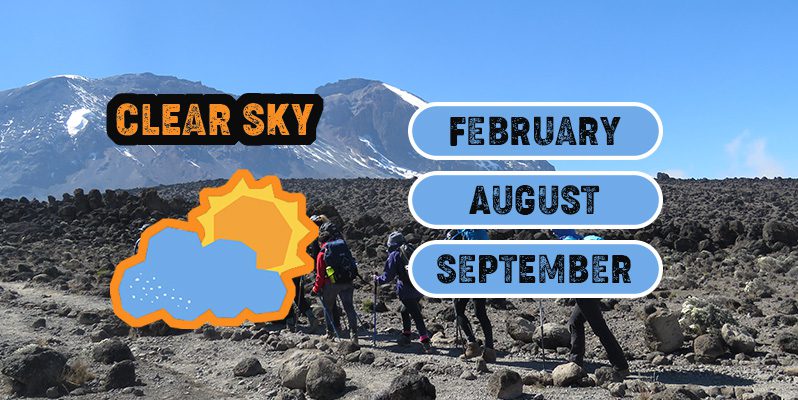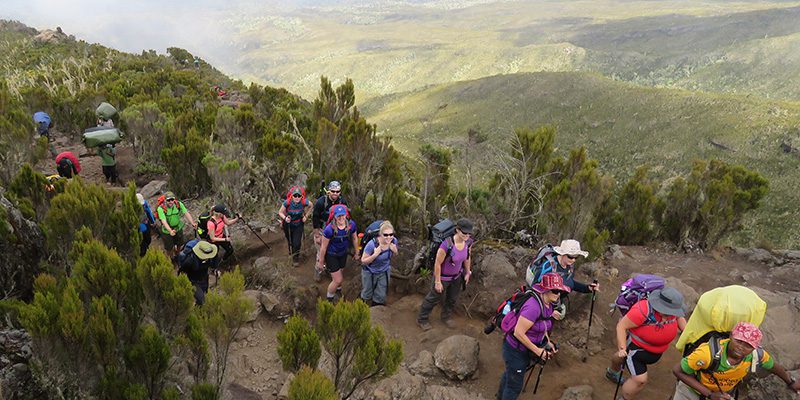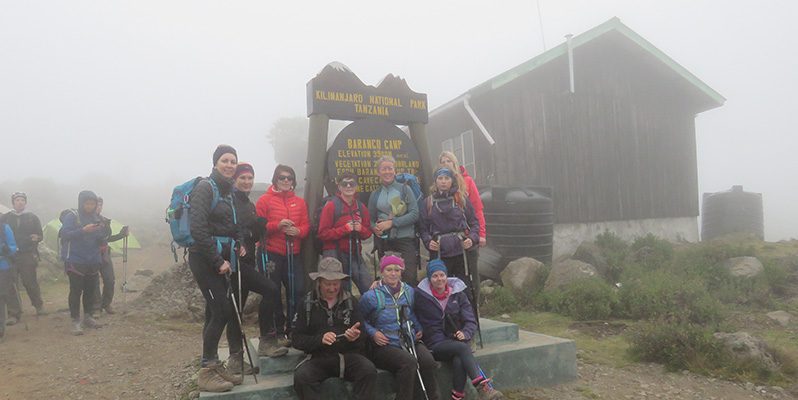The Best Time To Climb Kilimanjaro
Climbing to the summit of Kilimanjaro is undoubtedly an amazing adventure. Along with a range of emotions you’ll experience during the climb, you’ll also undergo drastic weather changes. While the ecstasy you feel is not something you can be prepared for, we can help give you a favourable climbing experience without compromising your safety and prepare you for the ever-changing nature of the mountains. Timing is everything when you embark on a journey like this
Although weather patterns are difficult to predict, there are certain times of the year when we see more preferable climbs in Kilimanjaro.
The months of February, August and September are particularly popular as you’ll be greeted with clear skies, low chances of rainfall and very reasonable temperatures. This is what makes this time a golden period where huge crowds come to make the climb. December also attracts many determined climbers seeking to complete a challenge to give a kickstart as they ring in the New Year.
While visitor traffic-heavy months may seem unfortunate, the views will more than make up for it. Your climb is a commemoration of a personal achievement unlocked, memories made with your loved ones. Think about all the photo opportunities!
A mindset to absorb as you climb the summit of Mount Kilimanjaro is to remember that while the climb is a bucket list item for many, there should be no compromise when it comes to ensuring the safety of our climbers. For that reason, we deliberately avoid organizing treks during the November short rains and the season-long rains in April and May. The drains become dangerous and the visibility along the path is extremely poor. Most accidents and mishaps on the mountain occur during such hostile weather conditions. Climbers are caught off guard by the unpredictable Kilimanjaro weather and fall victim to disorientation, exposure, and fatigue caused by the extreme environment.
That being said, even during the safer months, it’s better to be prepared for all kinds of weather. From warm sunshine to sudden rain, strong winds, and even snow. As you climb, temperatures can change quickly. One moment you’ll need layers to stay warm and protective gear to shield you from cold burns, and the next you’ll be taking them off under the hot equatorial sun.
One thing remains constant: this peak demands meticulous levels of preparation and commitment. The best time to climb Kilimanjaro is also determined by any individual’s personal journey in physical health. Along the summit, our bodies need to acclimatize to the weather changes as we climb higher up. This process becomes simpler with a focus on physical training months before the climb.
Throughout your climb, your experience will be enhanced through the support of our guides as they know the mountain inside out and are there to ensure your safety and comfort. Guides turn into companions and their wisdom and tales make your trek not only safer but also a more enriching and enjoyable experience
Ultimately, climbing Kilimanjaro is a profound journey that goes beyond physical challenge—it’s a testament to your human spirit and resilience. With the right timing, preparation, and support, your ascent of Africa’s highest peak will be an experience that leaves you with memories and a sense of accomplishment. So, choose your time wisely, embrace the adventure, and let Kilimanjaro inspire you as it has inspired countless others before you.
Climb Kilimanjaro the roof of Africa with PAT FALVEY & Team
Ready to embark on the adventure of a lifetime and discover Kilimanjaro’s captivating secrets firsthand? Join one of our expertly guided expeditions and experience the thrill, beauty, and challenge of summiting Africa’s tallest peak.
Are you planning a trip ?
Get help from our experts




